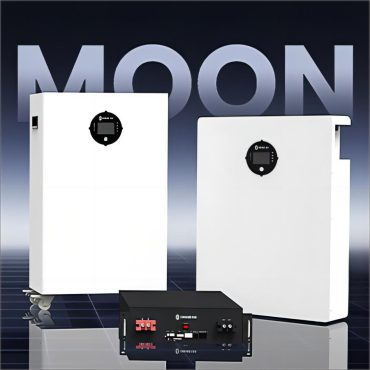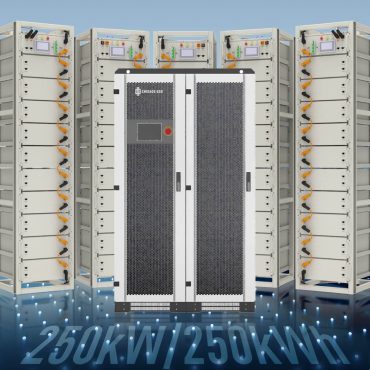Introduction: Due to the instability of photovoltaic power generation, energy storage battery Pack, as an efficient and flexible power storage technology, plays an increasingly important role in the future energy system. The energy storage battery Pack process is a key part of manufacturing, which directly affects the performance, life, safety, and other aspects of the battery. What kind of trials and tribulations has battery pack of Chisage ESS gone through? Let’s find out.
Production Line Overview
Chisage ESS has been in the field of solar battery for many years and is committed to producing high-quality energy storage battery packs. lithium-ion batteries are the mainstream technology for electrochemical energy storage in the field of household solar energy storage at present. According to the different cathode materials, lithium-ion batteries are mainly divided into lithium cobalt acid batteries, lithium manganese acid batteries, lithium nickel acid batteries, lithium iron phosphate batteries, lithium ternary batteries and so on. Considering the safety, stability and cost-effectiveness, our company mainly produces lithium iron phosphate household batteries and industrial and commercial batteries.
Household batteries are mainly low-voltage 100Ah, 200Ah, and 300Ah batteries, including 5kWh rack-mounted battery packs, 5-10kWh wall-mounted battery packs, 5-20kWh stacked battery packs, and 15kWh floor-mounted battery packs.

The industrial and commercial batteries mainly include 280Ah/0.5C Battery Packs, and 100Ah/1C Battery Pack, which can reach a capacity of 50kWh-1MWh through series-parallel connection; in addition, we also produce 372kWh liquid-cooled storage battery cabinets, which can reach the MWh level of use through parallel connection to maximize the demand for industrial and commercial energy storage.

Process Technology
The production process for Chisage ESS Battery Packs consists of eight main steps: cell sorting, module stacking, code pasting and scanning, laser cleaning, laser welding, pack assembly, pack testing, and packaging for storage. Now, following in the footsteps of Chisage ESS, our sales engineers are ready to take you on a virtual tour!
1.Cell Sorting
Firstly, we carry out the initial inspection of the battery cells, using OCV to measure whether the voltage is in the same gear and eliminate the defective products. Our battery cells are all made of new A-grade cells, with a single cell voltage of 3.2V, and the current production of battery Pack capacity is mainly 100Ah, 200Ah, and 280Ah.

2.Module Stacking
Use steel belts for pressing and packing, form 8 cells into 1 Module module, 2 Module modules into 1 Box Pack, and dissipate heat through ducts and fans.

3.Code Pasting and Scanning
Cell, Module and Pack are each labelled with a QR code and scanned into the EMS system for registration, so that after-sales maintenance can trace the production and testing information individually.

4.Laser Cleaning
Aluminum oxide and dirt on the surface of the cluster core are cleaned with a laser to prevent blow-ups, false welds, and insufficient depth of fusion during soldering, and to prepare sufficiently for the next step, thus making the soldering more reliable.

5.Laser Welding
Laser welding is a highly efficient and precise welding method using a high-energy-density laser beam as a heat source. We use the current top-of-the-line German IPG lasers to avoid damage to the pressure relief valve due to friction on the ultrasonic welding surface. After the welding is completed, it is also necessary to manually check that the welding is in place and clean any welding slag that may remain.

6.Pack Assembly
Assemble the protection plate, module pressure strip, collection harness, fan, BMS system, etc., and then install the insulating plate and cover to complete the total assembly in the box, so that the overall function of the battery pack can be realized.

7.Pack Testing
Our testing of pack batteries mainly includes insulation withstand voltage test and charge/discharge test. Insulation withstand voltage test includes torque test, cell voltage difference (maximum difference), shell insulation resistance test (to prevent arc breakdown), etc. Charge and discharge test refers to repeating the battery charging and discharging process, usually 100 cycles, through the battery power attenuation calibration SOC shipping requirements.

8.Packaging for Storage
After completing the inspection, the finished products can be palletised and put into storage, the regular palletisation is one pallet of 8 boxes for high voltage batteries and one pallet of 12 boxes for low voltage batteries.

As technology continues to advance, Chisage ESS battery Pack process will continue to evolve and improve. We welcome our global partners to join us in this dialogue, and we look forward to seeing more innovative solutions and sustainable development trends to meet the growing demand for clean energy in the future.


